HTC Robbie or a Taiwanese hurricane
HTC Robbie. Live pictures
Standard kit:
- Smartphone
- Charger
- Wire stereo headset
- 128 MB miniSD (optional)
- Cable for synchronization
- CD with software
- Documentation
Review HTC
Hurricane camera>>>
Review
Windows Mobile 2003 for Smartphone SE (QVGA
resolution)>>>
Terminological disputes about what a "smartphone" and a "communicator" are and how to distinguish them do not quiet down. Both devices possess PDA functions, an integrated cellular connection module, and a fully-functional operating system that allows installing extra programs. If a QWERTY-keypad and/or a touchscreen are present the device is a communicator, and the one lacking both is a smartphone. This division is very relative, and even specialists sometimes confuse the terms (or invent new ones). This very thin border has been gradually erased, and it will disappear completely when smartphones get a touch screen (the end of this year). Let's review the smartphone market today.
Two operating systems compete on the smartphone market; they are Windows Mobile (Windows CE core) and Nokia Series 60 (Symbian core). An undoubted leader is Series 60; however a mobile OS by Microsoft has been increasing its market share and starts a serious competition. Nokia is the main manufacturer of Series 60 devices, and a Taiwanese HTC (High Tech Computer) deals with Windows Mobile. There are some other manufacturers, but they form a very little share.
Unlike Nokia the name of HTC tells little to users, and that's why we'll give some explanation. A Taiwanese HTC is Microsoft's Hardware platform development partner. The company has released the fourth generation of smartphones and communicators already. As for handhelds, the majority of today Pocket PC PDAs are issued from HTC's pen (HP iPaq, Dell Axim, Fujitsu Siemens Pocket LOOX). The company products appear under various trademarks (against ODM/OEM contracts) of operators and other companies, they include T-mobile, Orange, O2, Vodafone, Qtek, I-mate, Dopod and others. Thus, the name HTC is unknown only to usual people, and specialists are well acquainted with it. Not to confuse our readers we'll call the devices by their internal code names. And today we test HTC Hurricane.

An interesting fact is HTC gives the names of natural disasters to its smartphones. We saw the "tungsten" before the "hurricane", and future smartphones will follow the tradition of "natural" names. Note, the Hurricane is a platform (or a playform in the company's terminology), it sets specifications for the device, and body material, design, the number of control elements may vary inside a certain platform. When the design and body materials are confirmed we get a product. We had HTC Robbie (particularly this design and material of the body). So, we can say HTC Robbie is one of the Hurricane platform versions and belongs to Hurricane family. This very device will appear on the counters under the following trademarks Qtek 8200, I-mate SP4m, Orange SPV C550 and many others. Also the platform will be popular in another ore classic design, for instance, T-mobile SDA II, but that is another product inside the HTC Hurricane platform (the same specifications, but another design and body materials).
As we have mentioned before, the Hurricane platform belongs to the fourth generation of HTC smartphones. Let's see how the products developed.
First generation. A code name - HTC Canary. That was mainly a pilot product to show itself. For the launch moment Windows smartphones were almost absent. The market treated the product coolly, the absence of Bluetooth and a camera and a big size prevented from accepting it well. There were too little people who believed in Microsoft's OS success, that was the middle of 2003.
Second generation. A code name - HTC Voyager. The platform is considerable elaborated. The design has not changed any significantly, but a new OS version is used, the screen in much better, camera and Bluetooth are added (integral attributes of a today smartphone). The model is accepted enthusiastically, and the number of OEM/ODM partners of HTC grows.
Third generation. A code name - HTC Typhoon. Break. Battery life is significantly increased; the size equals the one of today business phones. A new version of the OS and transfer to miniSD. That was one of the best smartphones in 2004, and only Nokia 6630 could compete. And as for the battery life and the size, the Typhoon has no equal. And here we smoothly come up to the fourth generation, and a typhoon turns into a hurricane.
Current, fourth generation. A code name - HTC Hurricane. The most serious improvement is using a new qualitative QVGA screen (it is more comfortable to work in the Internet, view photos, figures got much smoother). Until the launch of Nokia N90 the screen will remain the best among smartphones on the market. The second point to mention is a megapixel camera instead of the former VGA.
The design of HTC Robbie is mainly strict and inherits much from the previous model appearance: straight lines with rounding edges prevail. Now HTC prefers to refrain from such experiments with design that we got used to seeing in Nokia's devices.

The size of the device gives way to today business-models a bit (108x46x17.5 mm). You see it compared with SonyEricsson k750 on the photo. When using the smartphone this difference is even less notable. You can carry it just like a usual phone - in a shirt pocket if you like, it will cause no discomfort. This is one of the lightest smartphones of today - 107g. And that was the very HTC Typhoon to change the notion of the smartphone size.


Comparing Robbie with Nokia 6681 we see an evident advantage of HTC's smartphone, have a look at the photo. The company of HTC will be the first in miniature size and weight of its devices till 2006, and then Nokia will offer its new "thin" smartphones.
The main part of the body is of anodized aluminum which makes a feeling of a metallic surface and cools pleasantly. A black plastic line rounds the edges of the device. The battery cover is plastic in order not to increase the weight with a metallic one. The model is felt like solid and leaves a pleasant feeling. The assembly quality is traditionally high: all the details are joined closely, and even pressing in a hand you'll see no backlash. Solidity is the word to express the impression of the body. We'd like to not, an anodized aluminum supposes careful use; it shouldn't be carried together with other things in a pocket. A proper place to hold it is a case or a pocket of a jacket.

Thin system buttons are placed just under the screen. Two soft-keys, a "home" button (to turn back to the start display) and "back". They can seem uncomfortable to work with due to their narrowness. That is wrong; you'll get used to them at once and feel no discomfort. Below a row of specialized "musical" buttons is placed. The very first button calls a musical player (you can choose in settings which one). Three other buttons are responsible for the control of music reproduction (they process separately short and durable pressure, the result depends on it). You can't assign personal actions to musical buttons by standard means, so they can be used only for musical by default.

The joystick is comfortable both while playing games and working with usual applications. Three was no room for a large rocking button like in HTC Typhoon. "Musical" buttons crowded the number block down to the very bottom of the body. Though, it's hard to call comfortable, you should get used to it. While entering a message you'll have to hold the very bottom of the smartphone. The keyboard backlighting is even, it turns on only at poor light, which is to economize the charge.
There is a loudspeaker for conversations and two light indicators on both sides of it. On the top we see IrDA and a power button which is responsible for profiles also (short pressure, here you can select "aboard a plane profile"). A single camera button is placed on the right side, and an Internet Explorer button is on the left. A coupled loudspeaker volume button took its place nearby. Side buttons have a reasonably tough motion to prevent from accidental pressures.
A camera gap and a battery compartment are on the back. You can read a special material on the integrated camera.
The bottom of the device is of interest. A strap hole is here - you can carry the device on your neck, for instance. A small microphone gap is also here, it allows recording sound with good quality.

Opening a rubber shutter we see a miniUSB connector. It serves for connecting to a PC, since the smartphone is charged from USB. And the same slot serves for connecting an ordinary charger.
A standard smartphone headset connector of 2.5 mm is placed here. An open shutter with an attached headset looks not well, and that is strange for a musical device. But the quality of the music in the earphones is high; the smartphone can be surely used as a musical player. If discussing HTC Robbie in this role, we can stress several points. The max capacity of available memory card is 1 GB. You can write files via Active Sync (too long) or turn the device off, remove the battery and write on the card directly using a card reader. The absence of hot card change is a disadvantage as compared with Nokia smartphones. The absence of the USB Mass Storage function (accessing the card from a PC without any drivers, for instance, the function is available in Samsung i300) is also a minus.

The removable Li-Ion battery is capacious of 1150 mAh, which is not bad. The battery life announced is four hours in the talk mode and six days in the standby mode. The results of our tests show stable work for 2-2.5 days in Moscow under the condition of 20 minutes of talks, accessing the Internet via GPRS (40 minutes), several hours of listening to the music and other functions a day. At the same load Nokia 6681 works for a day or a day and a half. The device worked for 6 hours 30 minutes at the maximum load (showing video full-screen from the memory card), non-stop music from the memory card (the screen is off, the "aboard" profile) discharged the battery completely in 12 hours.

A SIM-card and miniSD holders are placed under the battery. We have told about the card above and won't repeat here. A question if it supports SDIO, that is if we can connect a mini SD Wi-Fi expansion card, remains unsolved.

Screen
This is the first time Windows Mobile smartphones use a 320x240 pixels (QVGA) screen, that is the main difference from the old platform. This resolution was available for only Pocket PC devices before. Later it will become standard, and now these are the first signs. The image became more exact and detailed with the same screen diagonal; working with it is comfortable (roughly speaking the number of the pixels doubled). We committed a little research in the target group (people who choose and buy smartphones on purpose). And it turned that about a half of the participants called HTC Robbie one of the main pretender to buy (Internet surfing, full-screen video were shown). Let's compare the screens with the rivals, and everything will get proper.
- HTC Hurricane - TFT QVGA display, 262K colours, 44.5x33 mm (diagonal -2.2")
- Samsung i300 - TFT QVGA display, 262K colours, 40x30 mm (diagonal - 1.97", almost 2")
- Nokia 6681 - 176x208 pixels, 262K colours, 41x34 mm (diagonal - 2.13")

Physically the screen is capable of 262K but shows 65K colours due to the OS constraints. The image is seen almost at any angle, the colours are not inverted and don't fade. It behaves well in the sun, the picture fades, but the text is still readable. Till the launch of Nokia N90 the screen of HTC Hurricane will remain the best for smartphones.
Wireless adapters
Bluetooth version is 1.2, the distance of about 10 m is supported. Drivers integrated into the OS are used. The capabilities to mention are:
- Headset is working with a wireless headset. We found no problems during our tests. The audibility is good. Voice dialing is available with prerecorded tags. Voice dialing works with no cavils. An interesting thing is when you leave the coverage zone, the headset starts peeping periodically, signifying the network is not available. HTC Hurricane was tested with Jabra BT330.
- Object transfer. You can transfer contacts, calendar entries to other devices and receive them as well. However you are not allows to send tasks and audio tags.
- You can receive or send any file, but the File Transfer service is not supported completely: only one file in one time unit.
- Emulation of COM connection is supported, synchronization of Active Sync via Bluetooth causes no troubles as well as connection with a Bluetooth GPS receiver.
- Dial UP - accessing the Internet via Bluetooth from a PDA or a notebook
Here are all the Bluetooth capabilities. The disadvantages result from the limitations of the integrated drivers by Microsoft - the settings are almost absent, FTP profile is not provided, not Bluetooth stereo.
Internet connection via GPRS is established without any problems. Unfortunately an expanded EDGE standard is not supported (and it is much faster than GPRS), though it is gradually introduced in Russia. Only next devices will support it as well as UMTS.
Software
The smartphone is run by Windows Mobile 2003 for Smartphone (QVGA screen resolution). And here are third party programs for it.
Java. Following the name, that is a utility to launch Java programs. Approximately a half of the programs works of all.
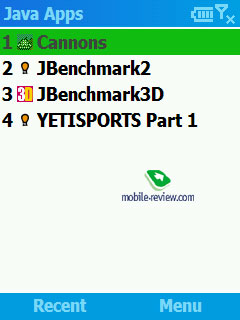
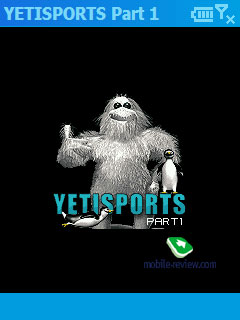
MMS. Create a multimedia message. Everything is clear.
Clear Storage. Complete formatting of the smartphone memory, hard restart.
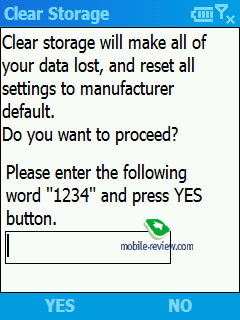
File Manager. A convenient file browser. Extracts ZIP archives.
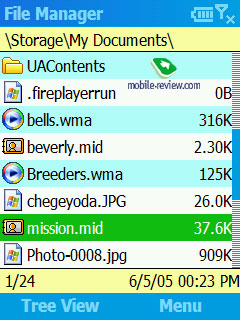
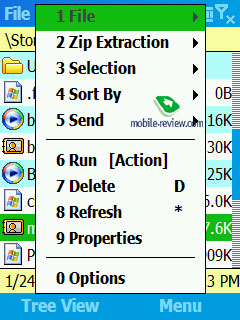
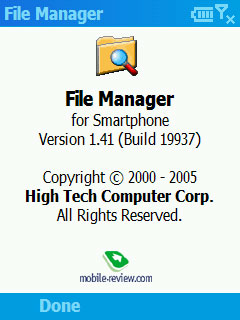

Modem Link. Allows using the smartphone as a modem. Possible connection types: USB, IrDA.
SIM Manager. An utility to control SIM-card contacts.
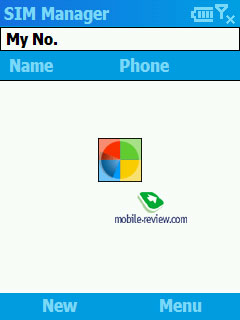
Space Maker. Free memory control. The program will help in deleting unnecessary files.
Task Manager shows running programs. Unnecessary ones may be closed to free memory. Also you can see system information.
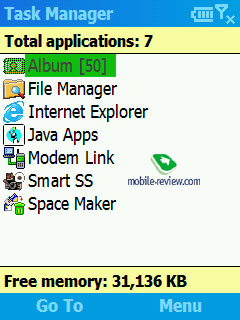
Specifications
The smartphone is based on Texas Instruments TCS2600 (the main part is CPU OMAP730 with the max clock rate forming 200 MHz). The clock rate is changed automatically depending on the current load. The available flash memory forms 26.97 MB (all the user data is kept there). Available RAM forms 51.61 MB (usually not more than 35-40 MB is free of this capacity). A great capacity of RAM is a marketing advantage of HTC Hurricane over Nokia's products.
Here are the JBenchmark 2 test results.
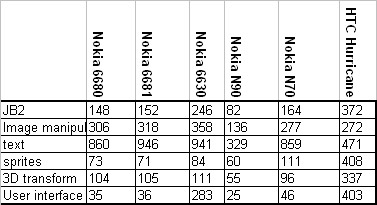
You see HTC Hurricane surpasses other products, but we won't make conclusions of it, since the results depend on Java realization on a certain device much.
Video was tested using The Core Pocket Media Player (a former BetaPlayer), so, the results are the following. Productivity level of about 100% means the film is shown averagely without frame falls, smoothly, however, collapses at active scenes are possible.

So, you can watch films on the smartphone after a special conversion, the productivity is enough. The interface works not as fast due to the grown number of pixels and the same CPU, but this speed decrease is not crucial. The device is even felt like faster than Nokia N90.
Impressions and conclusions
The reception quality rouses no cavils. The power of the vibra and the signal volume are average. Setting a loud mp3 melody as a call signal you will hardly miss it.
The main advantages the model possesses are long battery life, small size (for a smartphone) and a qualitative high resolution screen. These parameters will make the HTC Hurricane platform unattainable till the end of the year. Still the only Windows Mobile rival is Samsung i300. Their direct comparison is inappropriate, since the last device is larger and has an integrated hard drive and a wheel. They belong to different price categories. But nevertheless we'll return to the question of their comparison when we get a final example of Samsung i300.
Nokia 6681 is an indirect rival for HTC Hurricane. They are run by different operating systems but still can be compared, since the prices and specs are commensurable. Here is a table of strong and weak points of each device.
| |
HTC Hurricane |
Nokia 6681 |
| Strengths |
QVGA display, weight and dimensions, assembly quality, battery life. |
Integrated camera, Nokia brand, Bluetooth realization, memory card hot change |
| Weaknesses |
Bluetooth realization, no hot change of memory card, uncomfortable keypad, no EDGE |
Big size, short battery life |
Without a contract HTC Robbie will cost you about 470-500 USD in retail (the FOB price is 400 USD). Nokia 6681 is sold for 450 USD (the FOB price forms 410 USD).
Now HTC Hurricane is one of the best on the market. The probable next step is EDGE and Wi-Fi support in smartphones. Well, let's see.
Qtek 8200
This model is one of the representatives of the HTC Hurricane platform. We see the basic design is a bit changed - black plastic
insertions are replaced with silvery ones, a changed Windows Mobile logo on the back panel, a musical button is replaced with Internet Explorer (the left-side button earlier calling IE now is responsible for a file browser). But in fact, these are such trifles not really influencing the perception of the device.


As we can see on the photos, phones officially shipped to Russia will be equipped with a Russian keypad. And a significant thing is the font-size of Latin characters won't reduce. And the main peculiarity is integrated russification by Microsoft directly and not a third party company.


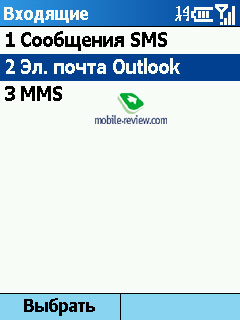


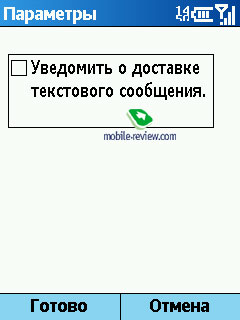
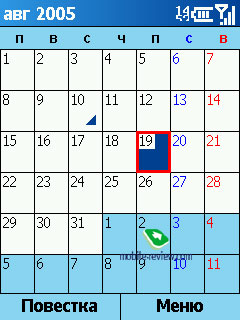
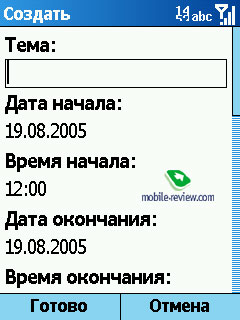
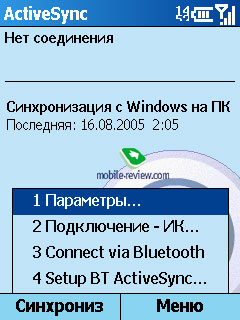
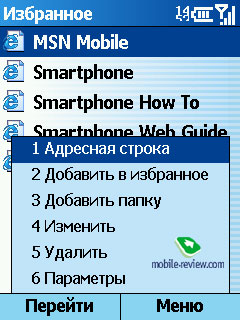
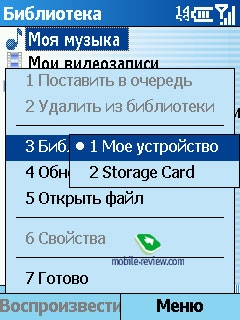
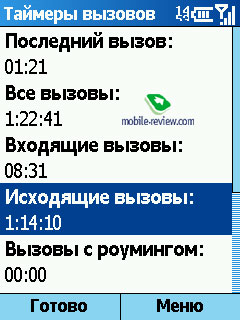
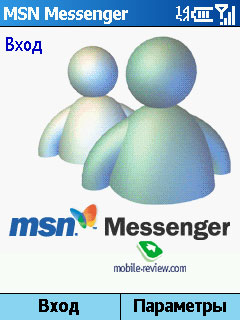
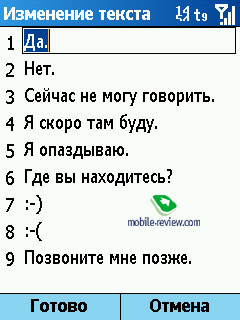
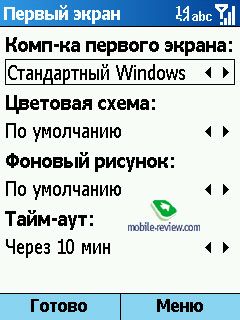
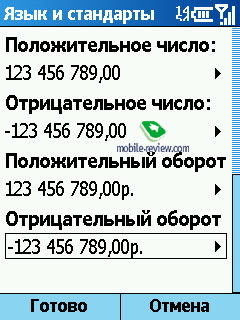
Though still there are too many complaints of the russification. It's clear the translation hasn't been tested on a real device by native speakers. Some items are not just translated and some are incorrect. And it's clear the translation doesn't concern OEM-applications.
Russian input deserves special consideration. You can't just switch to Russian or English text input. If you enter text in Roman letters (not T9) and want to switch to Russian, then you have to use the menu to switch to Russian T9 (three key pressures) and then turn T9 off (two key pressures). It seems the integrated language support was added in a hurry and not for the native speakers' comfort. Most possible the other new languages are treated the same way.
Links on the topic:
Description:
- Class: Windows Mobile smartphone
- Form-factor: candy bar
- Body materials: anodized aluminum and plastic
- Position in the line: above HTC Typhoon
- OS: Windows Mobile 2003 for Smartphone SE
- CPU: Texas Instruments OMAP730 220 MHz
- RAM: 64 MB (51.61 MB available to a user)
- Flash: 64 MB (26.97 MB available to a user)
- Interfaces: miniSD, IrDA (SIR), Bluetooth 1.2, USB for recharging and synchronization
- GSM 900/1800/1900, GPRS class B, multi-slot class 10
- Screen: TFT 2.2" with the resolution of 240x320 pixels, 65K
- Camera: CMOS 1.3 MP without flash, records video
- Note: four extra buttons for playing music
- Battery: removable Li-Ion capacious of 1150 mAh. Battery life announced:
- Talk time - 4 hours
- Standby time - 6 days
- Dimensions: 108x46x17.5 mm
- Weight: 107 g
Anton Kotov
(anton.kotov@mobile-review.com)
Translated by Maria Mitina (maria.mitina@mobile-review.com)
Published - 25 July 2005
Have something to add?! Write us... eldar@mobile-review.com
|







































